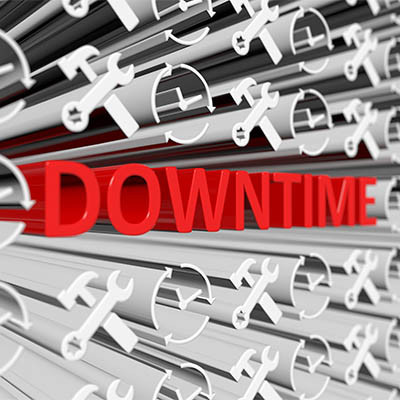Have your opinions of remote work changed at all over the past year and a half, or do you still want your employees to return to the office in full force? Many major companies, despite initially advocating for remote work, are sending mixed signals on the topic, including Microsoft. What can we learn from the experiences of these companies?
Network Synergy Blog
What do you do with your old email messages? Do they just sit around in your inbox and collect dust? If so, this is certainly a wasteful practice, as those emails can accrue over time and take up a sizable chunk of space. The question then becomes, what do you do with the emails to keep them from taking up so much space, especially when you might be paying for the space?
In today’s competitive business environment, you need every edge you can get to one-up your competition and make waves in your chosen industry. One of the best ways you can do so is by strategically implementing technology solutions that can enhance or transform the way your business operates both internally and externally.
Most of us take streaming media for granted. Whether you are streaming a movie on Netflix, binge-watching a show on Hulu, or using one of the growing number of streaming television networks to stream sports, shows, and news, there is quite a bit of interesting technology fueling your entertainment. Today, we thought we’d briefly go through some of the tech that makes these streaming services, and their millions of simultaneous streaming feeds, possible.
With so many technical terms to know and processes to understand, one might think that the only possible way to take care of your IT infrastructure is to hire professionals to monitor and maintain every aspect of it. While there is certainly a lot of truth to this statement, and working with professionals presents a ton of value, it doesn’t take a genius to implement small, common-sense practices that can compound over time.
The COVID-19 pandemic forced much of the workforce to work remotely, but now that the pandemic is marginally receding in several parts of the world, the question of if this workforce will continue to work remotely is up for debate. A report from Gartner suggests that things will move in the opposite direction from what you might expect. Let’s dive into what this report suggests and what it might mean for your business moving forward.
The phrase “time is money” is something that you hear a lot, especially in the business environment. While this might be applied in small ways, such as employees taking one or two minutes longer on their breaks or leaving early for the day, the major issue with wasted time manifests itself in much larger and more unpredictable ways. The true silent killer of businesses is downtime, and you need to be aware of its impact on your organization on a holistic level.
Many professionals see the word “informatics” and think of one of two things. First, what the heck is it? Second, isn’t that just computer science? While the two certainly are similar and often used interchangeably, they are quite different. Let’s take a deeper dive and see what the field of informatics entails, how it can be applied to computer science and business, and why it’s important to consider for your organization.
With the future so uncertain, it’s no surprise that many organizations are turning their focus toward business continuity. There are a lot of components that go into making a successful continuity plan, and if you want to optimize your chances of survival in the face of a disaster, you need to ensure that all your bases are covered.
Data breaches have a tendency to destabilize relationships. With so many data-related problems befalling businesses nowadays, it is important that each side of every data-driven relationship understands their role in the protection of other organizations’ data. Today, we’ll take a look at the issue and how to determine if your partners are putting in the effort required to keep your data secure.
The COVID-19 pandemic brought with it no small amount of uncertainty, including amongst business owners who were looking at a very up-in-the-air future. With so many lacking the technology needed to support remote operations—never mind the fact that remote work was a new concept for so many—the learning curve was a considerable hurdle. However, with vaccines being administered and restrictions lifted, it now becomes critical to find a balance.
All businesses, in some way, shape, or form, exist to generate revenue—whether their profits are retained for their own benefit or dedicated to supporting some other cause. Either way, this balance makes the difference between the investments a business makes and the return these investments see a critical consideration. By using modern technology, today’s organizations can tip this balance to be more in their favor.
With tax season quickly reaching its crescendo, accountants and CPAs face increased threats to their data security. Your clients' financial information is too good for a cybercriminal to pass up. Now is the time to prepare yourself to fight a cyberattack. Learn how managed IT can support your business in a variety of ways.
It’s incredible how working from home has become the new normal. Just a short time ago most business owners wouldn’t have batted an eye at shutting down the dreams of remote work, but because of the COVID-19 pandemic, they were forced to adjust the way they looked at the situation. Employees in several industries have been working from home ever since. Now that most places have begun to re-open, we thought we would remind you that there are actually some benefits to coming to the office.
Whether your business is just starting to open up, or your staff is diligently working remotely, the effects of COVID-19 are going to be long lasting for most businesses. For those of us who were lucky enough to get our employees situated and productive without putting them at risk, we’ve started to see the value in having the infrastructure to allow for remote access.
A lot has been made about the newly-remote workforce that has been doing their best during the COVID-19 pandemic. One issue that many ignore is burnout. Sure, it happens in the office too, but there is something unsettling about getting up and going to work walking distance from your bed. Today, we will take a look at at-home worker burnout and give you a few tips to help you keep from suffering the same fate.
How often do you find a message in your SMS inbox that has clearly come from a business, but you almost have to wonder, simply because the incoming number seems to be randomized? Google has taken notice of this challenge, and so has rolled out a means for businesses to confirm that they are in fact the ones sending a particular message.
The small businesses that rely on technology typically logs a lot of phone time with technology vendors. Decision makers that may not know more than the average person about IT can be left making important technology decisions when they think they are just making financial decisions. Today, we’re going to explain how they are different and what your next step is.






















